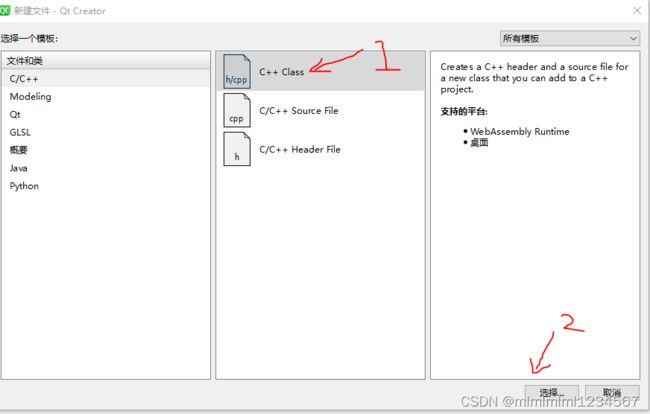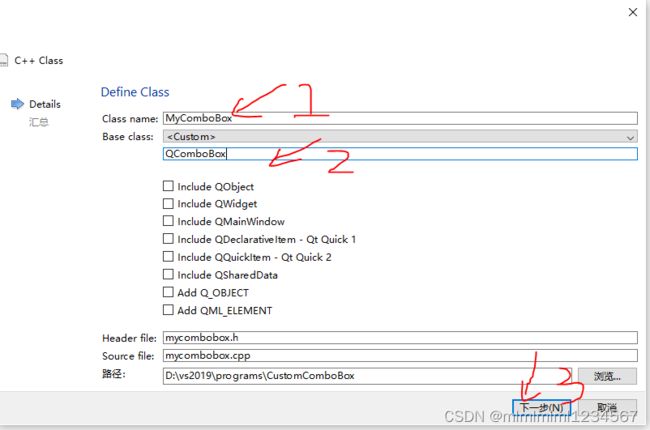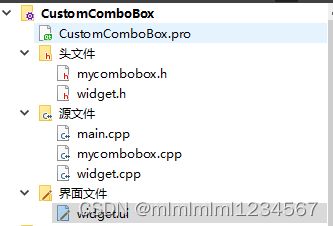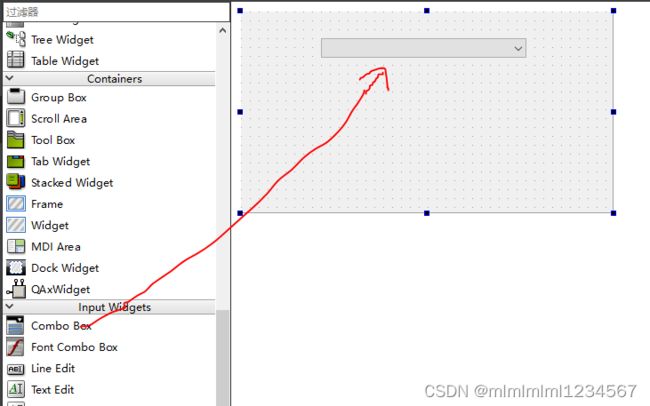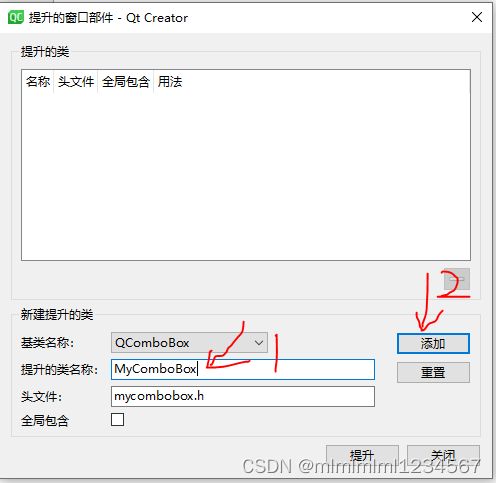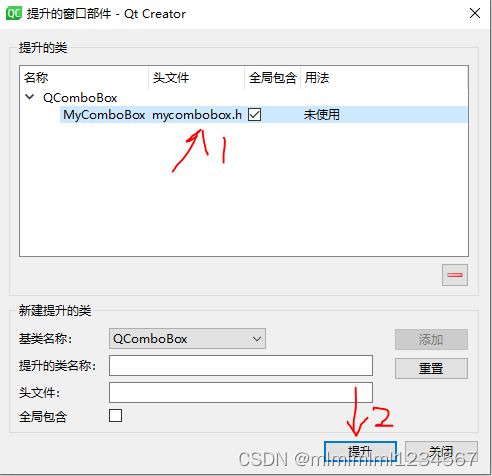QT5自定义下拉框为QTreeView类型(树形分上下级)的下拉框(QComboBox)(超详细步骤)
项目开发中,很可能简单的QComboBox满足不了需求,就需要自定义QComboBox。
先看效果。
自定义ComboBox
1、先建立一个project,命名为CustomComboBox,建立一个project的过程不细说了。建立后的工程目录如下图:
2、在项目名CustomComboBox右击鼠标,新建一个c++class
然后在弹出的页面设置class的名字为MComboBox,设置class的基类为QComboBox,然后点击下一步,在弹出的页面点击完成即可创建完成。
3、创建完成后的项目目录结构如下。然后双击widget.ui文件,在UI文件里添加控件QComboBox.
4、右键控件QComboBox,点击提升为,在弹出的页面提升的类名称写入MyComboBox,点击添加,就会在提升的类中就会出现已经提升的类MyComboBox。最后点击提升。QComboBox就变成了MyComboBox。
添加后的页面变成如下所示:
QComboBox提升前:
QComboBox提升后:
5、在mycombobox.h和mycombobox.cpp文件内编写代码。
mycombobox.h
#ifndef MYCOMBOBOX_H
#define MYCOMBOBOX_H
#include mycombobox.h
#include "mycombobox.h"
#include 6、接着,在工程中再添加数的节点的两个文件:mytreeitem.h,mytreeitem.cpp
mytreeitem.h
#includemytreeitem.cpp
#include "mytreeitem.h"
MyTreeItem::MyTreeItem(const QString &data, MyTreeItem *parent)
: parentItem(parent), itemData(data)
{
}
MyTreeItem::~MyTreeItem()
{
qDeleteAll(childItems);
}
void MyTreeItem::appendChild(MyTreeItem *child)
{
childItems.append(child);
}
MyTreeItem *MyTreeItem::child(int row)
{
return childItems.value(row);
}
int MyTreeItem::childCount() const
{
return childItems.count();
}
int MyTreeItem::columnCount() const
{
return 1;
}
QVariant MyTreeItem::data(int column) const
{
return itemData;
}
int MyTreeItem::row() const
{
if (parentItem)
{
return parentItem->childItems.indexOf(const_cast<MyTreeItem*>(this));
}
return 0;
}
MyTreeItem *MyTreeItem::parent()
{
return parentItem;
}
7、接着在工程中添加树的model的文件:mytreemodel.h, mytreemodel.cpp
mytreemodel.h
#include "mytreeitem.h"
#include mytreemodel.cpp
#include "mytreemodel.h"
MyTreeModel::MyTreeModel(const QString header, QMap<QString, QStringList> &data, QObject *parent)
{
rootItem = new MyTreeItem(header);
for (auto folder : data.keys())
{
MyTreeItem* folderItem = new MyTreeItem(folder, rootItem);
rootItem->appendChild(folderItem);
for(auto file: data.value(folder))
{
MyTreeItem *fileItem = new MyTreeItem(file, folderItem);
folderItem->appendChild(fileItem);
}
}
}
MyTreeModel::~MyTreeModel()
{
delete rootItem;
}
int MyTreeModel::columnCount(const QModelIndex &parent) const
{
if (parent.isValid())
{
return static_cast<MyTreeItem*>(parent.internalPointer())->columnCount();
}
else
{
return rootItem->columnCount();
}
}
QVariant MyTreeModel::data(const QModelIndex &index, int role) const
{
if (!index.isValid())
{
return QVariant();
}
if (role != Qt::DisplayRole)
{
return QVariant();
}
int col = index.column();
MyTreeItem *item = static_cast<MyTreeItem*>(index.internalPointer());
return item->data(index.column());
}
QVariant MyTreeModel::headerData(int section, Qt::Orientation orientation, int role) const
{
if (orientation == Qt::Horizontal && role == Qt::DisplayRole)
{
return rootItem->data(section);
}
return QVariant();
}
QModelIndex MyTreeModel::index(int row, int column, const QModelIndex &parent) const
{
if (!hasIndex(row, column, parent))
{
return QModelIndex();
}
MyTreeItem *parentItem;
if (!parent.isValid())
{
parentItem = rootItem;
}
else
{
parentItem = static_cast<MyTreeItem*>(parent.internalPointer());
}
MyTreeItem *childItem = parentItem->child(row);
if (childItem)
{
return createIndex(row, column, childItem);
}
else
{
return QModelIndex();
}
}
QModelIndex MyTreeModel::parent(const QModelIndex &index) const
{
if (!index.isValid())
{
return QModelIndex();
}
MyTreeItem *childItem = static_cast<MyTreeItem*>(index.internalPointer());
MyTreeItem *parentItem = childItem->parent();
if (parentItem == rootItem)
{
return QModelIndex();
}
return createIndex(parentItem->row(), 0, parentItem);
}
int MyTreeModel::rowCount(const QModelIndex &parent) const
{
MyTreeItem *parentItem;
if (parent.column() > 0)
{
return 0;
}
if (!parent.isValid())
{
parentItem = rootItem;
}
else
{
parentItem = static_cast<MyTreeItem*>(parent.internalPointer());
}
return parentItem->childCount();
}
最后,在widget.cpp中写测试代码
widget.cpp
#include "widget.h"
#include "ui_widget.h"
#include 
